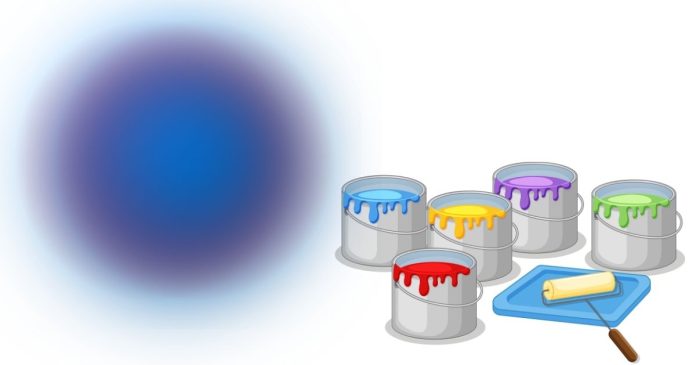When you mix blue and red, you’re combining two primary colors to create a secondary color—purple (or violet). The exact hue, tone, and saturation of the purple depends on several factors, including the specific shades of blue and red being mixed, as well as the medium you’re using (e.g., paint, light, or pigment).
1. Primary Colors:
- Blue and red are primary colors in the subtractive color model (used in painting and mixing pigments).
- The way these colors interact is different depending on whether you’re mixing pigments (subtractive mixing) or light (additive mixing).
2. Subtractive Mixing (Pigments/Colors in Art):
In subtractive color mixing (which applies to paints, dyes, inks, etc.), you are essentially combining the colorants to absorb (subtract) certain wavelengths of light and reflect others. The colors you get are the result of what is reflected back to your eyes after absorption.
- Mixing blue and red pigments in this system typically results in purple. However, depending on the specific pigments used for blue and red, you may get different shades of purple:
- Cool blue + cool red: The result will be a more blue-toned purple (e.g., cobalt blue mixed with magenta or cadmium red).
- Warm blue + warm red: This may result in a more red-toned purple (e.g., ultramarine blue with vermilion red).
- Tone and saturation can vary:
- If you use more blue, you will get a cooler, bluer purple.
- If you use more red, you will get a warmer, redder purple.
- Mixing in white or black can lighten or darken the color, respectively.
3. Additive Mixing (Light):
When you mix colors of light (like on a computer screen), the primary colors are red, green, and blue. When you mix blue and red light, you get magenta.
- Magenta is a color that is similar to purple but tends to be more intense or vibrant. This is because you’re mixing wavelengths of light that stimulate the red and blue receptors in your eyes, but it is not exactly the same as the purple you see when pigments are mixed.
- In additive color mixing, combining all three primary colors (red, green, and blue) results in white light, but combining only blue and red creates the magenta color, which has a high level of saturation and a different visual perception from pigment-based purple.
4. Factors Influencing the Result:
- Shade of Red and Blue: The nature of the red (e.g., crimson, vermilion, cadmium red) and the blue (e.g., ultramarine, cobalt, phthalo blue) will determine whether the purple leans toward a warmer or cooler tone.
- Medium: In pigment mixing, the medium plays a big role. For instance, mixing oil paints produces different results than mixing watercolors or acrylics due to differences in transparency and the way light interacts with the medium.
Conclusion:
Mixing blue and red typically results in purple, but the final color can vary from a cooler blue-purple to a warmer red-purple depending on the shades of the original colors and the mixing medium. In light (additive color mixing), the combination of blue and red results in magenta, a vibrant reddish-purple hue.


